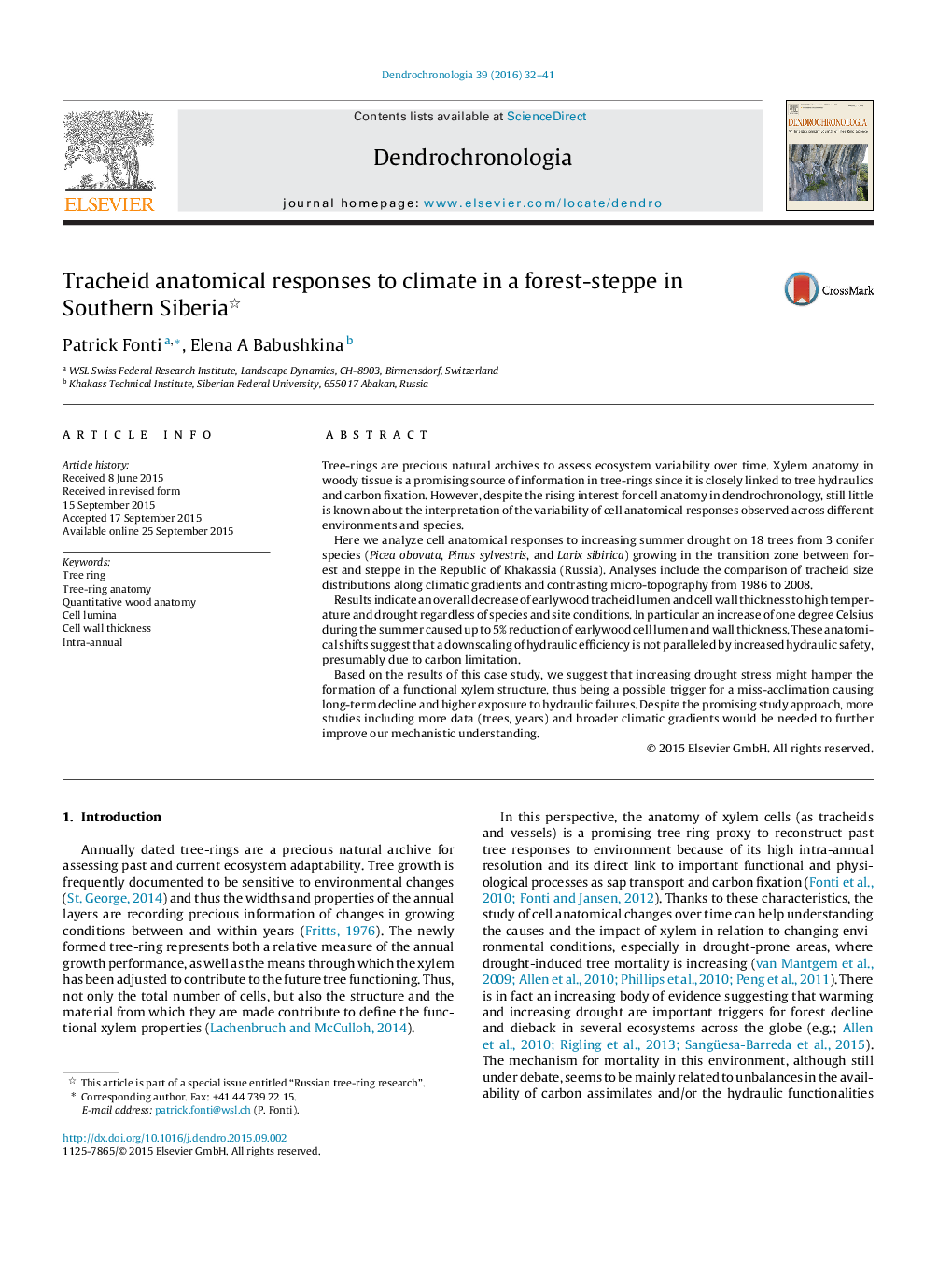| Article ID | Journal | Published Year | Pages | File Type |
|---|---|---|---|---|
| 85569 | Dendrochronologia | 2016 | 10 Pages |
Tree-rings are precious natural archives to assess ecosystem variability over time. Xylem anatomy in woody tissue is a promising source of information in tree-rings since it is closely linked to tree hydraulics and carbon fixation. However, despite the rising interest for cell anatomy in dendrochronology, still little is known about the interpretation of the variability of cell anatomical responses observed across different environments and species.Here we analyze cell anatomical responses to increasing summer drought on 18 trees from 3 conifer species (Picea obovata, Pinus sylvestris, and Larix sibirica) growing in the transition zone between forest and steppe in the Republic of Khakassia (Russia). Analyses include the comparison of tracheid size distributions along climatic gradients and contrasting micro-topography from 1986 to 2008.Results indicate an overall decrease of earlywood tracheid lumen and cell wall thickness to high temperature and drought regardless of species and site conditions. In particular an increase of one degree Celsius during the summer caused up to 5% reduction of earlywood cell lumen and wall thickness. These anatomical shifts suggest that a downscaling of hydraulic efficiency is not paralleled by increased hydraulic safety, presumably due to carbon limitation.Based on the results of this case study, we suggest that increasing drought stress might hamper the formation of a functional xylem structure, thus being a possible trigger for a miss-acclimation causing long-term decline and higher exposure to hydraulic failures. Despite the promising study approach, more studies including more data (trees, years) and broader climatic gradients would be needed to further improve our mechanistic understanding.
